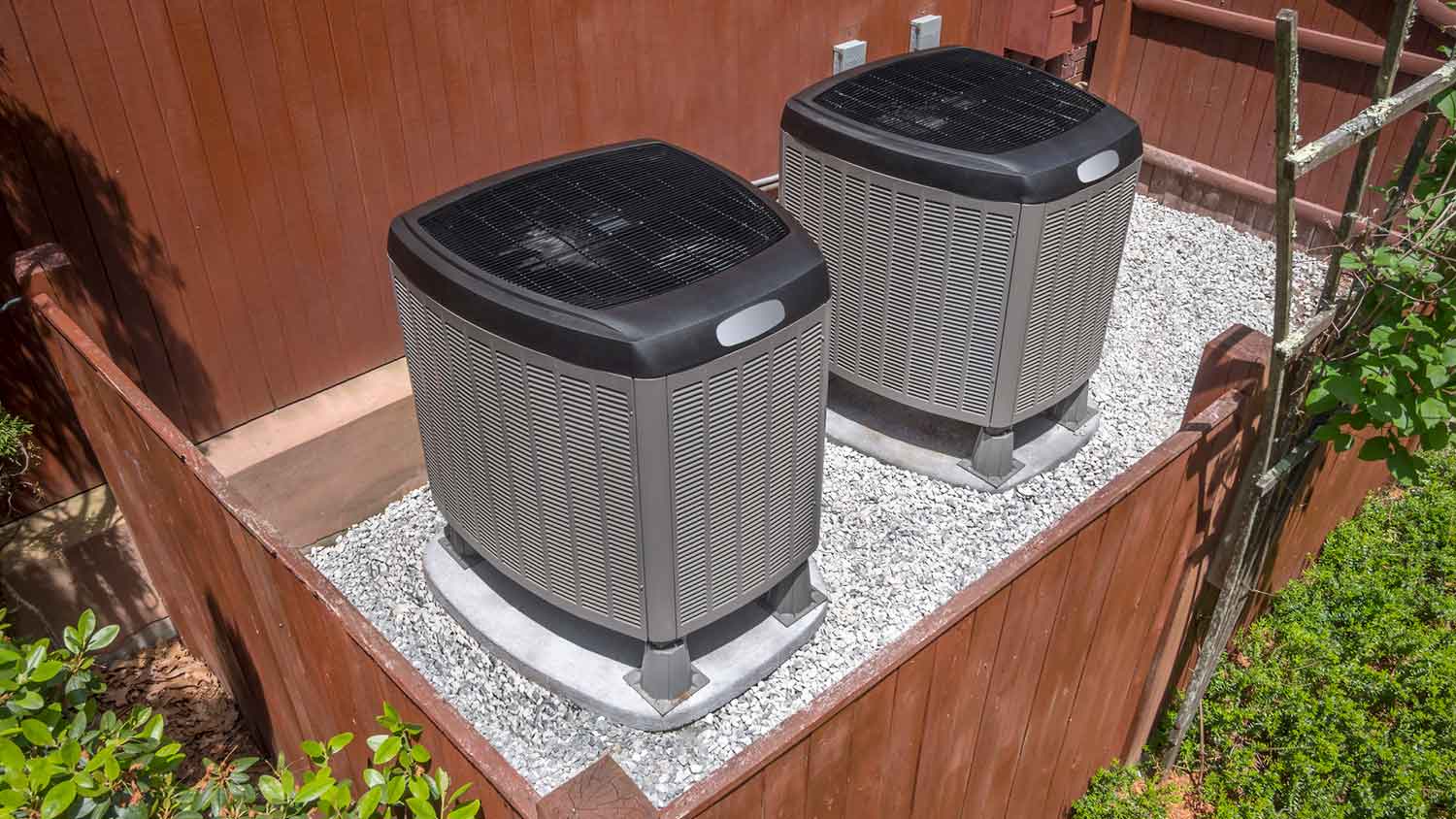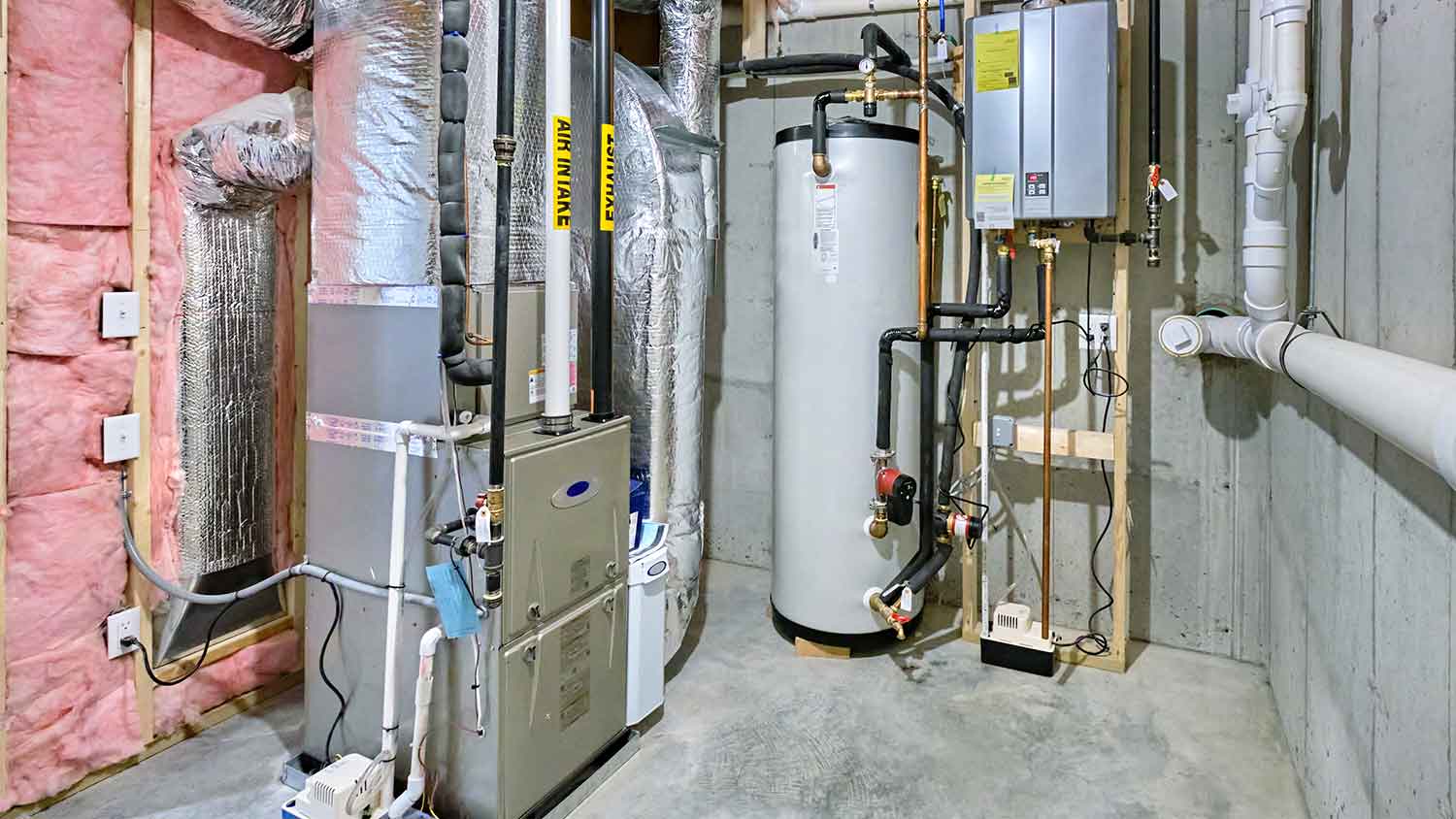Where to Put Your HVAC Unit: 7 Tips to Consider
Pick the perfect spot for your HVAC unit


The location of your outdoor and indoor HVAC units matter more than you might think. Learning where to put your HVAC unit can save you money and maximize the unit’s lifespan. On the other hand, the wrong location can put unnecessary strain on your unit, leading to costly repairs and higher energy bills. Instead of settling on a random spot, use these seven tips to pick the best location for your HVAC unit.
Where to Put an Outdoor HVAC Unit
Follow these guidelines for placing an outdoor HVAC unit.
1. Select a Shady Spot
Sunshine is great for plants. But when it comes to the placement of your outdoor HVAC unit, choose a spot that doesn’t receive direct sunlight. That way, during the hot summer months, your unit will stay cool and work optimally without exerting too much energy. This placement can also lower your monthly energy bill.
Look for a spot shaded by debris-free greenery or roofing during the hottest part of the day. Since the sun rises in the east and sets in the west, another trick is to place your HVAC unit on the north side of your home. In addition to following these tips, consult with an HVAC professional near you for unique insight on the best place for your unit.
2. Avoid Recreational Spaces
Even relatively quiet HVAC units will make some noise. The constant humming and whirring noises can be a nuisance when napping in your hammock or entertaining guests on the deck. Avoid placing your unit in high-traffic areas of your property. It will make recreational activities more enjoyable, minimize the risk of accidental damage to the unit, and boost your home’s curb appeal.
3. Pick a Pet-Free Place

If you have an especially curious or territorial dog, there’s a good chance they’ll take interest in your HVAC unit. Some dogs like to chew or urinate on air conditioner units, which can cause a serious problem for your HVAC system.
It’s important to place your HVAC unit in an area that your dog won’t be able to access. If this type of placement isn’t possible, consider installing a barrier around it, such as a small fence or a few well-manicured shrubs.
4. Steer Clear of Vegetative Debris
While trees and bushes can create shady conditions for your HVAC unit, make sure not to place it too close to greenery. Leaves, branches, pollen, grass clippings, and other debris can fall from surrounding vegetation and infiltrate your unit, causing costly damage. This also helps to keep your filter clean which can result in fewer replacements.
Where to Put an Indoor HVAC Unit
An indoor HVAC unit, also known as central air, pulls the heat and moisture from the air inside your home. Here are three must-know tips for choosing a spot for your indoor unit.
1. Place In the Center of Your Home

The center of your home is an ideal location for your indoor unit because it requires less ductwork, which saves money on future repairs and monthly energy bills. If that type of placement isn’t possible, choose a safe and secluded space where the unit can run efficiently, such as a small closet, pantry, or basement.
2. Pick an Easily Accessible Spot
Avoid placing your indoor unit in an attic or a hard-to-reach crawlspace. Initially, this placement can seem like a good idea, but those spaces may cause the unit to overheat or expose it to water damage. Instead, pick a dry, cool place that’s easy to access for filter replacements and other maintenance repairs.
3. Avoid Heat Sources
Just as heat from the sun can strain an outdoor unit, artificial sources of heat can pose a threat to your indoor HVAC unit. For that reason, avoid placing your unit near heat sources like lamps, televisions, and other appliances. This precautionary step will help regulate your home’s temperature and air quality without overworking the system.





- Furnace Repair
- Air Conditioning Repair
- HVAC Repairs
- Furnace Installation
- Wood & Pellet Stove Repair
- Dehumidifier & Humidifier Repair
- Heat Pump Companies
- Swamp Cooler Repair
- Wood Stove Services
- HVAC Companies
- Commercial A/C Repair
- Geothermal Installation
- Air Conditioning Installation
- Boiler Repair
- 24 Hour Furnace Repair
- Geothermal Repair
- Heat Pump Repair
- Humidifier Installation
- Thermostat Repair
- Thermostat Installation
- Nest Installation
- Heating & Cooling
- Heating Repair
- Furnace Cleaning
- Furnace Tune-Up
- HVAC Technicians
- Subcontractors
- Furnace Maintenance
- Plumbing & Heating Companies
- Wood Stove Inspection
- Mini Split Installation
- Wall Heater Repair
- Duct Installers
- 10 HVAC Secrets That Can Help You Boost Efficiency and Save Money
- Problems With Your AC Unit? Here’s When To Call HVAC Repair
- How to Clean Your AC So It Runs All Summer Long
- Why Is the Outside AC Unit Not Turning On, But the Inside Is? 9 Common Reasons
- 7 Common Mini Split Low Refrigerant Symptoms and Signs
- Who Can Install a Window AC Unit? Your Hiring Guide for AC Installation
- The Best Time to Buy an Air Conditioner
- Are HVAC Maintenance Plans and Service Contracts Worth the Money?
- What Does an HVAC Service Call Include? What to Expect
- Should You Cover Your Air Conditioner in the Winter? Everything to Know










